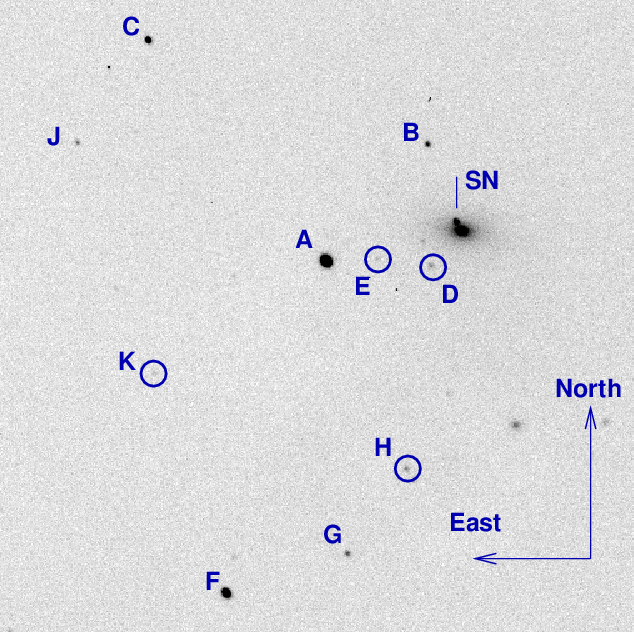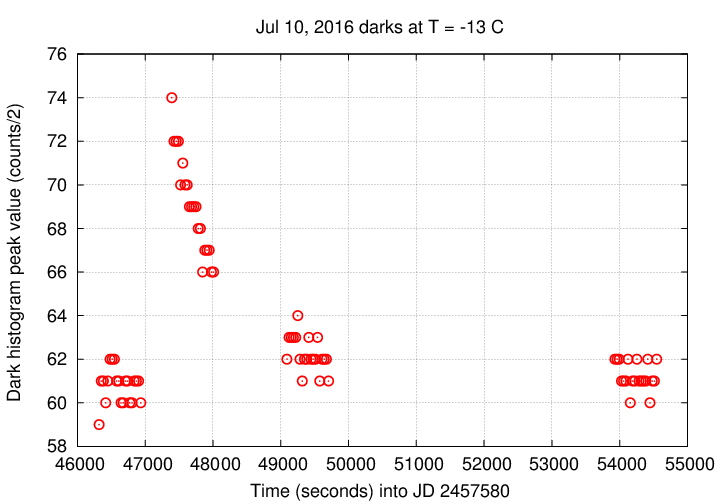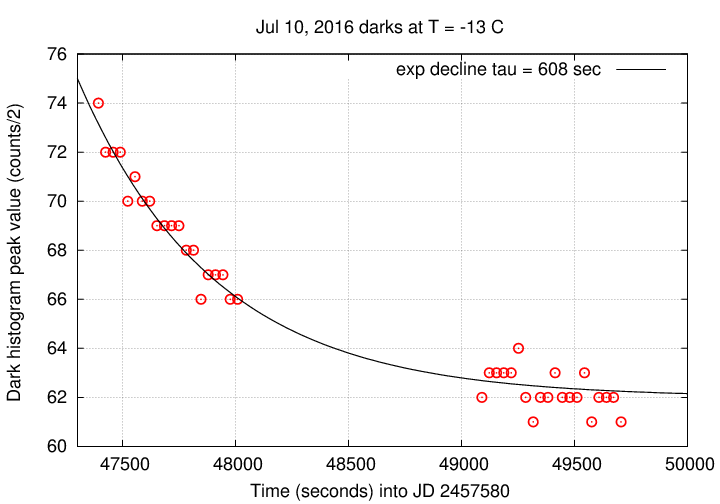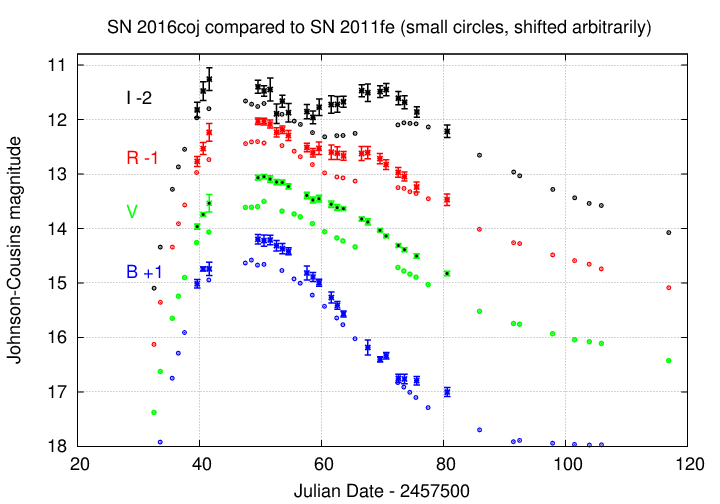
On the night of Jul 10/11, 2016, I observed SN 2016coj in NGC4125.
The main setup was:
Notes from the night
SN 2016coj is a Type Ia supernova in the relatively nearby galaxy NGC4125. It was discovered by the KAIT group some time before maximum light:
NGC 4125 RA = 12:08:05.7 Dec = +65:10:30 (J2000)

The AAVSO sequence team kindly provided photometry for stars near this object. You can see their full photometric sequence on their website. Below, I show only the members of that sequence which fall into my very small field of view -- taken from AAVSO sequence X16288FJI. Note that star "K" is so faint that I may not detect it clearly in B-band.
letter B sigB V sigV R sigR I sigI ------------------------------------------------------------------------ B 15.198 0.086 14.133 0.052 13.627 0.116 13.155 0.156 C 13.317 0.093 12.673 0.058 12.316 0.121 11.980 0.161 J 15.607 0.109 14.956 0.065 14.603 0.136 14.271 0.182 K 16.573 0.123 15.975 0.082 15.547 0.174 15.147 0.231 -------------------------------------------------------------------------
In the continuing saga of the dark current, I again found that dark images taken immediately after twilight sky flats -- even if no flatfield images were saturated -- showed higher counts than dark images taken at other times.
On this night, none of the twilight flats exceeded about 30,000 counts -- but the excess charge still accumulated. In the graph below, twilight flatfields were taken at time 47200, between the first and second set of darks.

This "ghost" or "excess" charge dissipates in a roughly exponential manner, with a time constant of about 600 seconds = 10 minutes.

Moral of the story: Wait about 40-60 minutes after flats before doing just about anything else.
I took sets of 15-20 images in each filter, guiding in VRI, but not B. I used longer guide exposure times in I. I discarded any trailed images.
As explained in the notes to Jun 14, 2016, I used the "rotsub" technique to remove the galaxy's light at the position of the SN.
On this night, I used "method 2", which means performing "rotsub" on each individual image, then combining all the resulting images in a passband to make a "master rotsub" image.
Using aperture photometry with a radius of 4 pixels (radius of 5.5 arcsec) I measured the instrumental magnitudes of a number of reference stars and the target. Following the procedures outlined by Kent Honeycutt's article on inhomogeneous ensemble photometry, I used all stars available in each image to define a reference frame, and measured each star against this frame. I used the interim reference magnitudes above plus color terms which I am currently revising -- so please treat these results as preliminary to convert the ensemble instrumental magnitudes to the standard Johnson-Cousins BVRI scale.
Note that in the graph below, I combine data calibrated with UCAC4 photometry (first few weeks) with recent data calibrated with AAVSO photometry. That's inconsistent, and I'll re-compute all magnitudes later. Note further that I use only 2 AAVSO stars (B and C) for calibration, for consistency with earlier measurements; I'll use additional stars in my final calculations.
filter mag mag_uncert Julian Date
SN B = 16.003 +/- 0.082 (ens 0.075 zp 0.032) 2457580.60486
SN V = 14.827 +/- 0.041 (ens 0.040 zp 0.009) 2457580.59557
SN R = 14.473 +/- 0.103 (ens 0.034 zp 0.098) 2457580.58881
SN I = 14.218 +/- 0.115 (ens 0.047 zp 0.105) 2457580.61869
Below is a preliminary light curve, based on RIT Observatory measurements. I also show measurements of SN 2011fe in M101, an ordinary type Ia supernova, shifted arbitrarily.

Last modified 07/11/2016 by MWR.